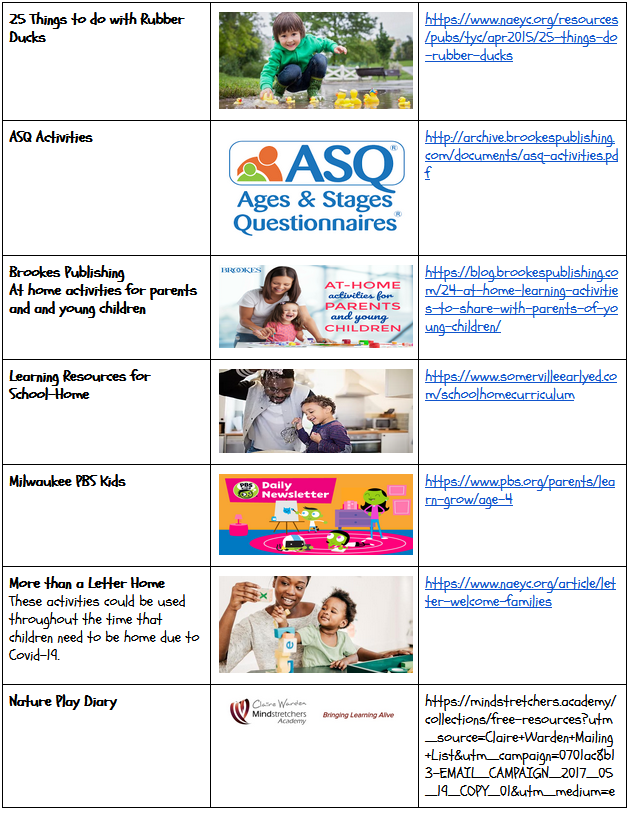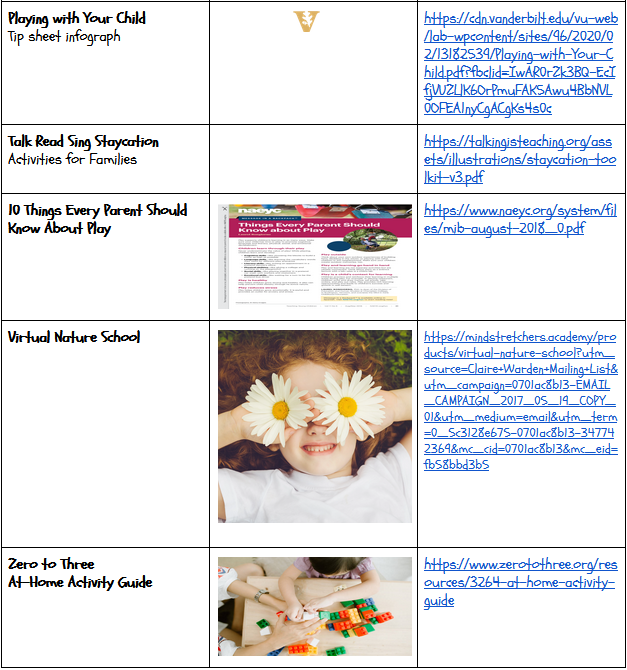

Listening Games
Telephone: Start with one sentence, and whisper it to the person next to you. The last person says the sentence they heard out loud. If working with just 2 people, go back and forth a few times.
Freeze Dance: Pick a fun song, stopping it occasionally and seeing who freezes their bodies. Try to hide the music source so children can’t see when it will stop.
Tell a Group Story: The first person starts a story with one sentence. Then the next person adds onto the story, and it continues until everyone has contributed at least four sentences to the story. This requires listening to what has already been said and making connections.
Please, May I: The person who is the “it” stands on one end of a space/side of the room, while the other player(s) line up at the other end. Each player takes a turn asking if they can move (Please, May I take 3 giant steps? Please, May I jump 4 times?) The “it” says yes or no; for advanced games the “it” can say “No, but you can xxxx (take 3 small steps, etc). This continues until 1 other player crosses the room and tags the “it”
Red Light, Green Light: One person is chosen to be ‘It’ and he/she stands a good distance away from the other players with his back to them. The other players stand in a line facing “It”.
When It calls ‘Green Light,’ the other players move towards him until he spins around, calling ‘Red Light.’ When they hear the red light command the other players must freeze on the spot. Any child seen moving must return to the starting line. The children must remain frozen until the next ‘Green Light’ command is given. Play continues in this
Do a chore: clean up, prepare a snack, sweep, etc.
Complete a fine motor task (ideas included)
Look at the pictures in a book and discuss what is happening
manner until someone reaches and tags It. The tagger becomes the new It and the game begins again.
Simon Says: One person is designated Simon, the others are the players. Standing in front of the group, Simon tells players what they must do. However, the players must only obey commands that begin with the words “Simon Says.” If Simon says, “Simon says touch your nose,” then players must touch their nose. But, if Simon simply says, “jump,” without first saying “Simon says,” players must not jump. Those that do jump are out.
Row, Row, Row Your Boat: This games helps with self-awareness and listening. Sit across for a partner, knees up in front of you; holding hands. Sing the song, row, row, row your boat and move your arms rocking back and forth as you sing! Practice going fast but safe and in slow motion.
Fine Motor Activities
Tear Paper Art: Draw a picture, shape or letter largely on a piece of paper. Have your child tear construction paper into small pieces and glue the torn pieces inside the picture/shape/letter. This time of year shamrocks, flowers or rainbows are a common drawing.
Toothpick Poke: Write numbers, shapes or letters on paper. Use toothpicks and poke the lines to create numbers, shapes or letters. This can be done with any type of picture.
Paper Weaving: Begin by evenly folding one piece of paper in half. Measure and mark lines that will create 2 cm strips. Begin cutting along the lines but importantly from the folded edge.
Once you have done this, open it up. It will look like a piece of paper with a frame and sliced lines through it. Next, using the other colored piece of paper, simply cut lots of 2 cm paper strips. And now the weaving process begins. Those individual strips of paper can then be woven through the first paper we started with.
Other Activity Ideas: ● Place pegs into peg boards ● Complete Lacing Cards ● Build with Building Blocks ● Peel Stickers ● Twirl streamers with both arms
● Put together a puzzle ● Cut straws and make a necklace ● Design and complete a maze ● Cut out circles, triangles, rectangles, ovals, hearts and rhombus
● Paint with Q-Tips ● Draw with a variety of writing utensils ● Complete a Directed Drawing for preschoolers off YouTube ● Trace letters in shaving cream ● Draw a person with 6 body parts ● Trace your hand and cut it out ● Screw lids on containers ● Finger or watercolor paint ● Play with playdough ● Color inside the lines of a picture ● Place small beans or rice one piece at a time into an empty water bottle ● Fold paper into quarter or halves and cut it
● Draw a picture (or use a coloring book picture), draw black lines over it, have child cut those lines to create a puzzle ● Make a Snowflake ● Match Plastic Easter Eggs ● Stack plastic cups ● Make a marshmallow and toothpick sculpture ● Paint with plastic forks ● Play with slime ● Make edible playdough out of kool aid ● Make a sensory bin out of rice and small gadgets ● Paint with marbles ● Play a board game ● Play a card game ● Make a card for a family member Learning Games & Activities
Shape Patterns: Cut out 10 hearts and 10 triangles (or other shapes), hide them around a room. Once hidden, have your child find & collect them; making sure to count the shapes as they go. Once all are collected, make a pattern with them such as heart, triangle, heart, triangle. For students who are unable to pattern on their own, begin the pattern for them and have them finish. To make it more challenging, create a more challenging pattern such as heart, heart, triangle, heart, heart, triangle.
Gem Trails: On a piece of paper write your child’s name (or even 1 letter or a curved line) largely. Use small items such as stickers, sequins, torn up paper, etc. and have your child arrange them along the letter; making sure to only place the object on the line.
Shape Counting: Use the shapes from above and now write a number of them, have your child put the shapes in number order 1 – 10; then count them one at a time. Or add matching numbers to the triangles and hearts and play a memory game; matching the same number on 1 triangle to the same number on the heart (#5 heart matches #5 triangle).
Roll & Cover: Draw 12 objects on a paper (any object or shape will work); write the numbers 1 – 6 on the object so that each number is written twice. Add dice to the activity or if you don’t have a dice make flashcards with the numbers 1 – 6. Roll one die, count the dots, and cover the object with the same number on the page. Keep rolling and covering until all objects are covered.
Find the Alphabet: Write letters on a piece of paper; 6 letters on one paper in 3 rows of 2 letters. Write the same letters to post-its (or another piece of paper). Write one letter to each post-it/paper. Stick the post-its/paper around the house in different rooms. Have your child find each letter and stick the post-it/paper on the matching letter on the paper. To add more of a challenge, write the uppercase letters on a paper and the lowercase on post its or paper for the hunt.
Draw the Story: While listening to a book being read (no looking at the pictures, just listening). When the story is over draw a picture about the story.
Name Write & Cut: Write out your child’s name, leaving some space between each letter. Have your child cut the letters of his/her name out to create a name puzzle. Mix up the letters and have him/her put the name back together again. Do so with the names of everyone in your house. It is helpful to have each person’s name on a paper as a guide. This can be done with other words as well.
Memory: Create 2 sets of the same cards; numbers, shapes, letters, etc. Mix up the cards and lay them in rows, face down. Begin playing memory: First player, turns over any two cards. If the two cards match, keep them and go again. If they don’t match, turn them back over. The point is to match all the cards so make sure to explain to your child to remember what was on each card and where it was. The game is over when all the cards have been matched.
Hide & Seek: One person is the counter and everyone else hides. Counter counts to 20 and then goes and hides others playing. This is great for problem solving and spatial awareness.
Information from the Greater Watertown Community Health Foundation